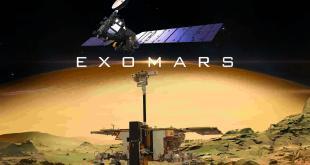by Arne Sönnichsen, University of Duisburg-Essen
The ESA Agenda 2025 – Opinions by members of the SichTRaum network

On April 7 this year, one month after Dr. Josef Aschbacher took office as the European Space Agency’s (ESA) new Director-General, the ESA Agenda 2025 was released.
This document contains the agenda of the new Director-General for the agency over/for the next four years. It outlines five priorities, which will have many long-term implications:
- Strengthening ESA-EU relations,
- Boosting space commercialization for a green and digital Europe,
- Developing space for safety and security,
- Addressing critical program challenges,
- Completing the internal transformation of ESA.
Although many of them come as no surprise, the urgency assigned to dealing with these priorities is unexpected – and welcome.
In this series of opinion pieces, members of the SichTRaum network provide their thoughts on some of the priorities, taking into account the broader context of the ongoing space sector transformations. SichTRaum is a network of researchers from various disciplines who look at human space exploration from the perspective of peace and security. It is an acronym for “Sicherheit und Technologie im Weltraum”, in English: “Security and Technology in Outer Space”. Find more information here.
—

This article questions the potential of ESA’s goal of “Boosting space commercialisation for a green and digital Europe” in light of the changes of the global space industry, particularly the turn toward commercialization and privatization and its potential and challenges in the European context.
Commercialization in the space industry is probably the most obvious change in humanities’ spaceflight ambitions, publicly recognized by experts, the public and by entrepreneurs, who recently received major coverage and attention as for their transformative effect on the global space industry. While the recent commercialization can be observed easily in the US and to a lesser degree in some other regions, such as China, Japan, Russia, and some European countries, ESA did not yet articulate a stance toward commercialization. This changes now with the Agenda 2025 which declares the goal, especially in the wake of climate change and digitalization: “Europe too needs to benefit from a vibrant commercial space sector to serve its own societal and economic needs and priorities.”. However, while Europe has some key advantages, particular a well-educated and productive workforce, in the attempt to imitate the American approach to boost commercialization there are several obstacles in that path that need to be addressed.
First, culturally, US entrepreneurs are more risk-taking than Europeans. That becomes especially apparent in the figureheads of the New Space wave, particularly Elon Musk, Jeff Bezos, and others, who not only invested large proportions of their wealth while taking tremendous risks into their space companies but who also employed radically different approaches in creating space technology than what was standard in the space industry. The US space launch market offered high revenues, ready to be taken, if an actor ‘get a foot in the door’. With some help of NASA, SpaceX and some others succeeded in doing so. The difference can be expressed in numbers when comparing the private investments of 5 billion US-$ in the US with the meager 188 million US-$ in Europe in 2019. Europe’s five to seven times smaller budget for space additionally results in a smaller market for space entrepreneurs, thus it might become difficult to simply copy the US approach. Additionally, Europeans tend to be more risk-averse, making it hard to motivate them to invest. It remains to be seen whether there is a yet undiscovered market that allow similar revenues to draw the attention of risk-taking entrepreneurs with sufficient funds.
Second, ESA explains: “ESA is ready to strengthen its role as a user and first buyer or anchor customer on behalf of its Member States and the EU.” This is generally some good news. Fact is, that the scheme to boost privatization and commercialization in the US launch industry was not only possible because of technology transfer and some additional funding provided by NASA’s COTS program, it became a lasting success when NASA awarded contracts of several resupply and crew flights to the ISS to private entities with the CRS and CCP program, thus creating a market that would herald substantial and continuous revenues, and spilled over to other major US agencies like the Department of Defense. This was a game-changer, since earlier private space launch initiatives, beginning in the 1980s, failed especially because of the monopolized market in which NASA awarded launch operations solely to its major aerospace contractors, nota bene with political support, and thus excluded new private space launch entities from participating. While private-commercial actors are faced with questions of financing their ambitions, the real challenge is to sustain a business model beyond the initial development phase. Because of the limited number of customers in the space industry, the state actors, particularly ESA and the European states are key to provide start-ups with a robust business perspective. However, worrisome, the whole paragraph in the Agenda can be read with a ‘but’. One issue might be ESA’s founding principle of redistributing industrial contracts to the member states’ industries and its established commitment to companies such as Arianespace. This might hamper ESA’s ability to act as an anchor customer. Further, it remains to be seen how big the markets in the space industry will be and whether this will be enough to sustain revenues for private entities. This will prove whether the goal will be sufficient to jump-start a distinct European commercialization of the space industry.
Third, innovation is key, but innovation comes rarely without risk. While the Agenda is full of mouthful promises it remains to be seen whether these initiatives will carry enough momentum to really spark European commercialization in space. A welcoming pledge is concerning risks: “ESA has to supplement its role of a risk mitigator with that of a risk taker in areas with commercial growth potential.” Indeed, and as mentioned earlier, New Space would not have been successful, if all involved actors – state agencies, politicians, entrepreneurs – would not have reevaluated their concerns regarding risks. In order to allow a true commercialization, this arrangement needs to be evaluated – not just in the national or regional sense, but also regarding outer space governance, to allow for legal certainty.
Finally, while it is all too natural to jump on the commercialization bandwagon, a number of questions that are not unique to the European commercialization of outer space, but to the global space sector, arise. One is how commercialization will react with the growing importance of security-related issues of outer space (some might even say the militarization of outer space)? A second one is how a turn to commercialization will change the DNA of the European approach to spaceflight, particularly ESA’s devotion to science-civilian goals? And third, how commercialization will affect the global changes in the space sector and whether space will remain safe, sustainable, and open for mankind remains to be seen, particular in context with a global climate crisis which highlights the limits of the planetary boundaries to each and every human endeavor. While it is unfair to pose these questions to the ESA Agenda 2025, as it can hardly answer these alone, the Agenda 2025 might be an origin of a new set of questions concerning human spaceflight in general and private-commercial spaceflight in particular.

Arne Sönnichsen, M.A., is research assistant and PhD candidate at the Chair of International Relations and Development Policy at the University of Duisburg-Essen. In his research he traces the impact of technological innovations on ordering processes in outer space governance, including the emergence of private space launch capabilities, the impact of technologies utilized for military purposes and discussions surrounding a space traffic management. Other interests of his are popular culture and politics, particular the depiction of International Politics in the TV franchise Star Trek. Together with Daniel Lambach he is coordinator of the DSF funded SichTRaum network dealing with issues of security and technology in outer space.





